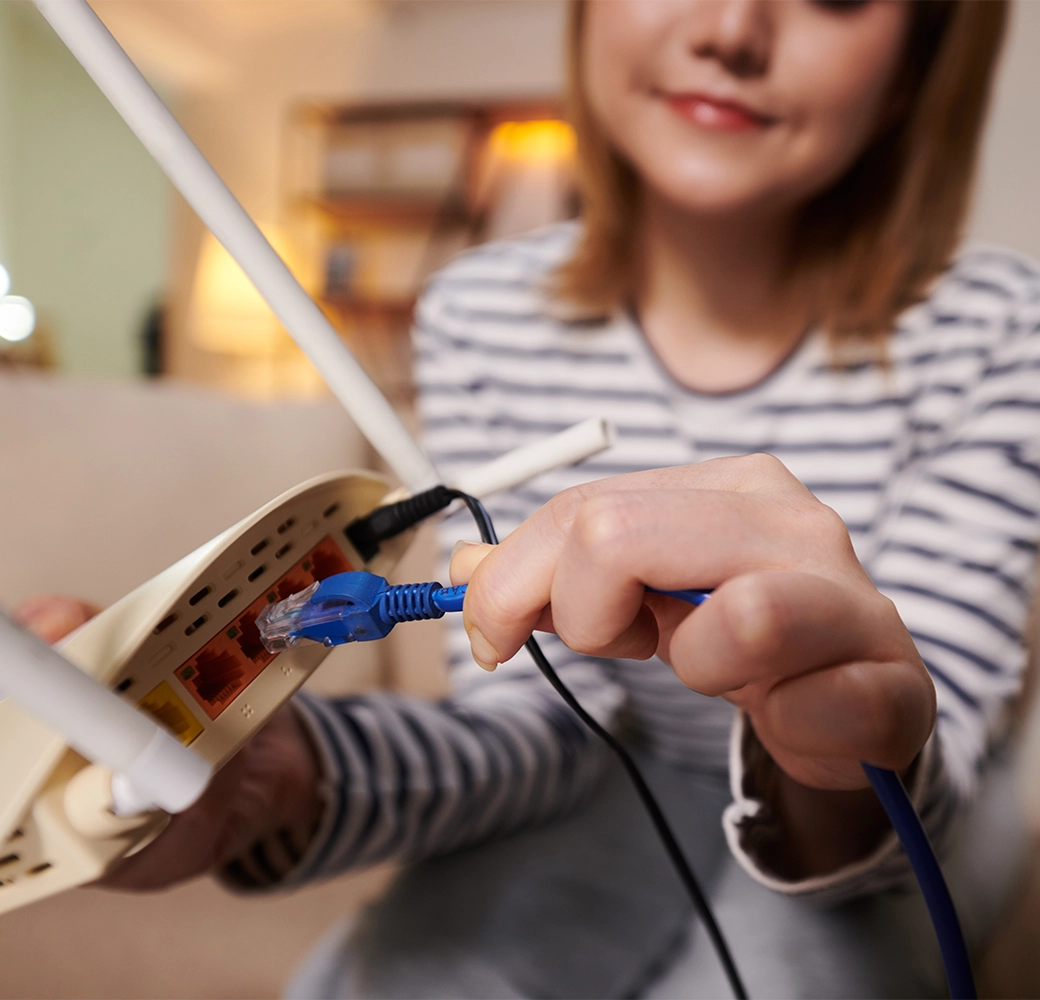You lock your doors at night and keep an eye out for suspicious activity around your home, but what about your Wi-Fi? A secure home network is just as essential as locking the front door. With so many devices connected to your network—smart TVs, phones, tablets, gaming consoles, and even home appliances—it’s more important than ever to ensure your Wi-Fi isn’t an easy target for cybercriminals.
Unsecured networks leave the door wide open for hackers to steal personal information, access devices, or install malware. But the good news is that with a few simple steps, you can strengthen your home network and protect your privacy.
Ensure your devices are updated
First, ensure all internet-enabled devices run the latest operating system, web browsers, and security software. This includes mobile devices that access your wireless network. Hackers are always looking for new ways to steal data, and keeping your software updated is an easy way to step ahead. If you don’t already, install software updates as soon as they’re available.
Secure your wireless router
A wireless network is when you connect an internet access point—such as a cable or DSL modem—to a wireless router. Wireless is now essential in many homes because it allows you to connect multiple devices to the internet from different areas of your home. However, if you don’t secure your router, you’re vulnerable to people accessing the information on your computer, freeloading off your internet service, and (potentially) using your network to commit cybercrimes.
How to secure your wireless router:
Change the name of your router
The default ID—called a “service set identifier” (SSID) or “extended service set identifier” (ESSID)—is assigned by the manufacturer. Change your router to a name that is unique to you and won’t be guessed by others.
Change the preset passphrase on your router
Keeping the router’s manufacturer default passphrase in place makes it much easier for hackers to access your network. Change your router’s passphrase right away. A strong passphrase uses at least 12 characters and includes letters, numbers, and symbols. The strongest passphrases are not recognizable words.
Review security options
When choosing your router’s level of security, opt for WPA2, if available, or WPA—these levels are more secure than the WEP option.
Turn off remote management
Disable this feature unless you absolutely need it. It prevents others from accessing your router’s settings remotely.
Create a guest passphrase
Some routers allow guests to use networks via separate guest passphrases. If you have many visitors to your home, it’s a good idea to set up a second network just for guests. A second network allows visitors to connect to your Wi-Fi without being able to access devices connected to your main network.
Use a firewall
Think of a firewall as a security checkpoint—it filters traffic, allowing only trusted sources to communicate with your devices. Most modern operating systems include built-in firewalls, and many routers come with firewall settings as well. Make sure your firewall is turned on, both at the device and network levels, and consider enabling intrusion detection features if your router supports them.
Protect your account with these tips:
Even with a secure network, it’s still critical to ensure your account itself is protected. Strengthen your login security with these tips:
Enable multi-factor authentication (MFA)
Whenever offered, use two-factor authentication or MFA like biometrics, security keys, or a unique, one-time code through an app on your mobile device.
Use long, unique passphrases
Your password should be at least 12 characters long with a combination of letters, numbers, and symbols. It should also be unique—avoid reusing the same passphrases you use for other accounts, like online banking or social media.
Bottom line
Your home network is the foundation of your digital life. Just as you wouldn’t leave your front door open, don’t leave your home network exposed. Taking the time to secure your Wi-Fi and connected devices can prevent data theft, financial loss, and unwanted access. A safer internet starts at home—and it starts with you.





